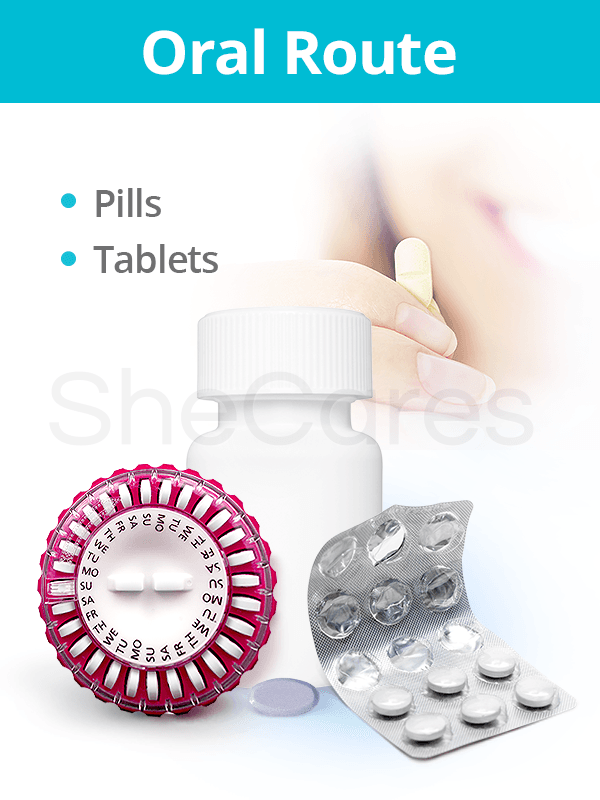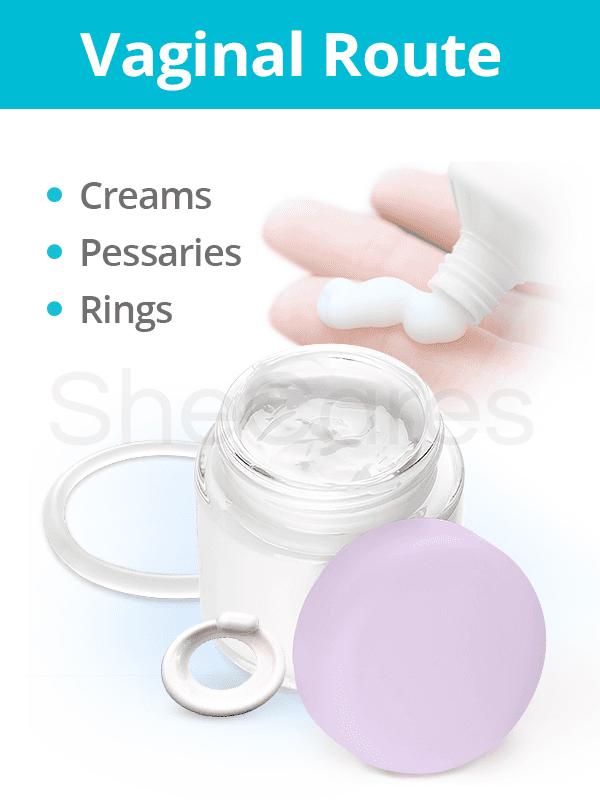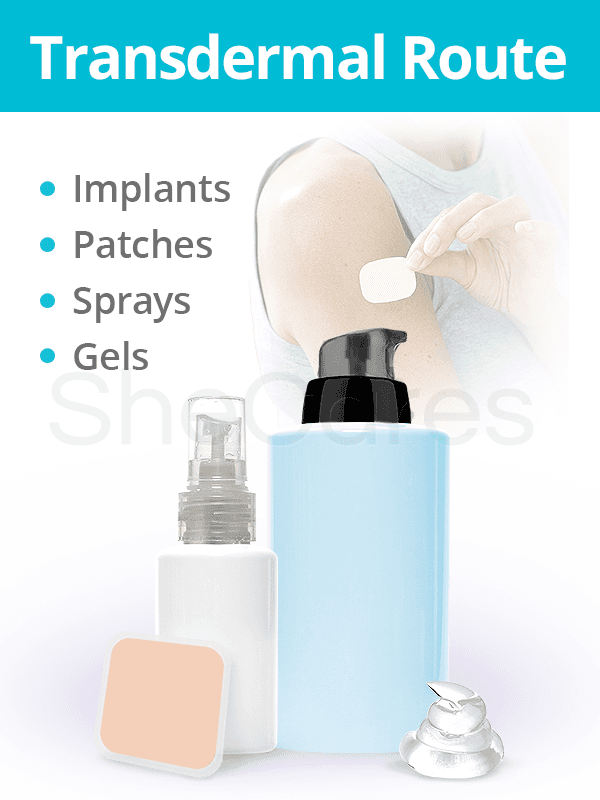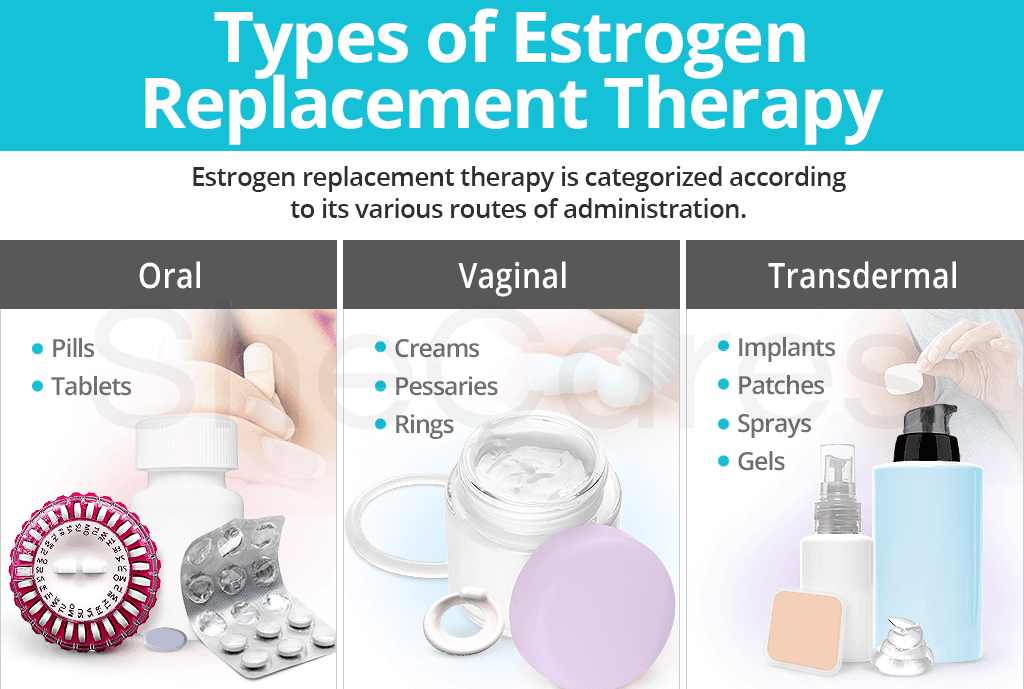When resolving a hormonal imbalance, women may look into which type of estrogen replacement therapy is right for them. From among the many oral, vaginal, and transdermal routes, there is something for everyone.
Continue reading to learn about the various types of estrogen replacement therapy so that you can correct the hormonal imbalance causing havoc in your body once and for all.
Oral Route

Estrogen-only HRT is most commonly prescribed as pills or tablets to collectively treat menopause symptoms, from mood swings and hot flashes to depression and anxiety. Keep in mind that some risks are higher via oral consumption, such as blood clots and liver damage.
Pills or Tablets
Estrogen pills and tablets are normally taken once a day. They can be alone or in conjunction with progesterone. The treatment regimen will depend on the type of HRT pursued.
Vaginal Route

These types of estrogen replacement therapy are mainly for women suffering from vaginal discomforts, such as dryness, burning, or itching; dyspareunia; or urinary urgency and irritation. If experiencing other symptoms, another option may be more appropriate.
Creams
Instructions for use often involve inserting an applicator filled with estrogen cream into your vagina on a daily basis for several weeks. You may decrease use to a few times a week according to doctor's orders. Follow the specific instructions of your estrogen vaginal cream for best results.
Pessaries or Rings
For use, follow your doctor's instructions. In general, they should be placed within the upper third of your vagina once daily for a few weeks until the estrogen kicks in. It may take several months to witness its effects, during which your dose may be lowered several times.
Transdermal Route

Transdermal estrogen-only HRT is used to treat all symptoms of menopause and is commonly used by those with sensitive stomachs. Unlike oral options, they don't increase risk of blood clots. However, some may lead to skin irritations.
Implants
Estrogen-only implants provide a slow release of the hormone and can stay in place for several months without needing to be replaced, making it easier for those who feel like they may be forgetful of their treatment. Once the estrogen within runs out, you will go to your doctor's office to have it swapped.
Patches
Estrogen patches provide a consistent release of the hormone throughout the amount of time it is applied. For use, stick the patch to a clean, dry area of the skin as indicated by your medical professional, usually the abdomen or thigh. They last for a few days or weeks before needing replacement, and they are appreciated by those who like self-administration.
Sprays
This type of estrogen HRT comes in applicators that deliver a measured amount of hormone to the skin. The spray is to be applied once or several times a day to clean, dry skin depending on one's treatment regimen, normally on the inside of the forearm between the elbow and wrist. Allow it to dry for a few minutes before dressing or at least an hour before washing. It is not necessary to rub it in.
Gels
Like patches, estrogen gels allow for a slow and controlled release of estrogen into the body. Each pump consists of the prescribed amount of medication you need. Apply it to clean, dry skin as thinly as possible. This treatment is usually self-applied once per day, depending on your specific case.
Precautions
With any forms of estrogen replacement therapy, there are risks of long-term use, such as uterine cancer from a state of estrogen dominance.
Normally, estrogen-only HRT is only recommended for those whose uterus has been removed, signifying that they cannot develop endometrial cancer.
Keep in mind that if the risks outweigh the benefits, there are safer choices available to balance estrogen levels. Click on the following link to learn about natural alternatives to HRT.
Sources
- Mayo Clinic. (2018). Estrogen (Vaginal Route) | Estradiol (Transdermal Route). Retrieved January 14, 2019, from https://www.mayoclinic.org/drugs-supplements/estrogen-vaginal-route/proper-use/drg-20069459 | https://www.mayoclinic.org/drugs-supplements/estradiol-transdermal-route/proper-use/drg-20075306
- MedlinePlus. (2018). Types of hormone therapy. Retrieved January 14, 2019, from https://medlineplus.gov/ency/patientinstructions/000695.htm
- NHS. (2016). Types: Hormones replacement therapy (HRT). Retrieved January 14, 2019, from https://www.nhs.uk/conditions/hormone-replacement-therapy-hrt/types/
- University of Michigan Health System. (n.d.). Instructions for use of Estrogen vaginal cream. Retrieved January 14, 2019, from http://www.med.umich.edu/1libr/urology/EstrogenVaginalCream.pdf
